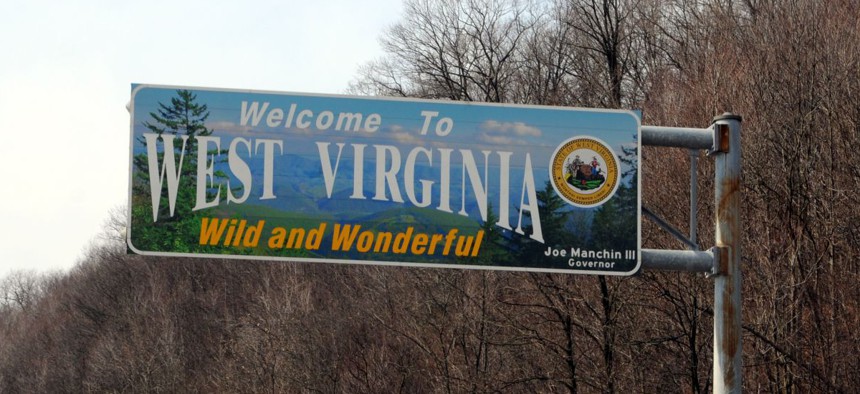Tracking W.Va.’s Opioid Pill Pipeline; Opening Date Set for N.Y.C.’s 2nd Ave. Subway

Shutterstock

Connecting state and local government leaders
Also in our State and Local Weekend News Digest: Nigerian man indicted in L.A. County phishing attack; investigation finds that $1 billion was misused for Navajo Nation housing; and Iowa bill would ban traffic cameras.
OPIOID ABUSE | An investigation by the Gazette-Mail found that as the number of drug overdoses spiked in West Virginia in recent years, pharmaceutical companies kept on sending highly addictive pills to areas of the state ravaged by the abuse of painkillers. In six years, drug wholesales sent 780 million hydrocodone and oxycodone pills to West Virginia. At the same time, 1,728 state residents died from hydrocodone and oxycodone overdoses. In Mingo County, which has the nation’s fourth-highest prescription drug death rate in the nation, 9 million hydrocodone pills had been sent to a single pharmacy over the course of two years. [Gazette-Mail]
PUBLIC TRANSIT | It’s official: The long-awaited Second Avenue Subway line in New York City, first proposed nearly a century ago, is slated to open for revenue service on Jan. 1 after an inaugural ride by New York Gov. Andrew Cuomo planned for Dec. 31. The Metropolitan Transportation Authority, the state agency that’s been building the project, had promised to deliver the first phase of the new subway line to 96th Street on the Upper East Side by the end of 2016. While the state can say that the project is “on time,” when the MTA broke ground on the subway extension in 2007, the first phase was had been scheduled to be completed in 2013. In 2009, the timeline was reset with a 2016 completion timetable. It has become the world’s most-expensive subway on a per-kilometer basis. [New York Daily News; Second Avenue Sagas]
CYBERSECURITY | A Nigerian man has been charged with orchestrating a phishing attack on Los Angeles County employees that may have exposed personal information or private health data of up to 750,000 individuals who have done business with the county. The L.A. County district attorney has charged Austin Kelvin Onaghinor with nine counts related to the phishing attack, which targeted county employees in 15 departments. Onaghinor has not yet been arrested and it’s unclear whether he is currently on U.S. soil. “My office will work aggressively to bring this criminal hacker and others to Los Angeles County where they will be prosecuted to the fullest extent of the law,” according to District Attorney Jackie Lacey.
In an unrelated phishing attack, officials in Sedgwick County, Kansas, which includes Wichita and its suburbs, disclosed that the county lost more than $500,000 due to a fraudulent email sent on Sept. 18 “that appeared to be from [a] vendor asking that billing information … be changed.” [Mashable; L.A. County District Attorney’s Office; The Wichita Eagle]
WHISTLEBLOWERS | Eric Payne, a former District of Columbia finance official who had sued the D.C. government for wrongful termination and alleged 11 violations of the Whistleblower Protection Act, was recently vindicated by a jury, which awarded him $1.7 million in damages plus back pay and attorneys fees. Payne alleged that he was pressured by city officials to scrap a politically sensitive lottery contract that he had awarded and was “ritually pulled apart, humiliated, and eventually exiled” from the D.C. government. [Washington City Paper]
INFRASTRUCTURE | The Howland Franklin Bridge carries Interstate 275 across Old Tampa Bay between the cities of Tampa and St. Petersburg, and has been slated for expansion with tolled express lanes. But there’s been a big misunderstanding among multiple intergovernmental stakeholders over just how many lanes the new bridge structure will have. This digital explainer, using Legos, shows what went wrong. [Tampa Bay Times]
ELECTRIC VEHICLES | Pacific Gas and Electric Co., the largest utility in California, is planning to spend $130 million on 7,500 new charging ports for electric vehicles in a plan that secured approval from the California Public Utilities Commission on Thursday. At least 15 percent of the new charging ports will be located in economically disadvantaged communities, part of an effort to make electric vehicles more accessible into those areas. [San Francisco Chronicle]
HOUSING | What happened to $1 billion in federal funding that was supposed to go toward building housing on the Navajo Nation reservation in Arizona and New Mexico? An Arizona Republic investigation into the Navajo Housing Authority, which oversees the funds, has found that the agency has “failed in ways almost too numerous to count,” including spending $100 million on “projects that never housed anyone.” [The Arizona Republic]
ECONOMIC DEVELOPMENT | The Maryland Department of Commerce has included an area of West Baltimore impacted by civil unrest in 2015 in the state’s 34-year-old Enterprise Zone program. Those zones have been used to help support economic revitalization in neglected and impoverished areas. [Baltimore Business Journal]
TRAFFIC ENFORCEMENT | Brad Zaun, a Republican state senator in Iowa has pre-filed a bill for the upcoming legislative session that would ban automated traffic enforcement cameras in the Hawkeye State. While efforts to ban traffic enforcement cameras are not new in Iowa, previous legislation had been stymied by the Senate majority leader, Democrat Mike Gronstal, who was defeated in the November elections. With the GOP now in charge of the Iowa Seante, the legislation is likely to proceed. [Quad City Times]

NEXT STORY: North Carolina's 'Legislative Coup' Is Over, and Republicans Won




